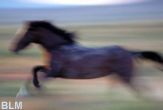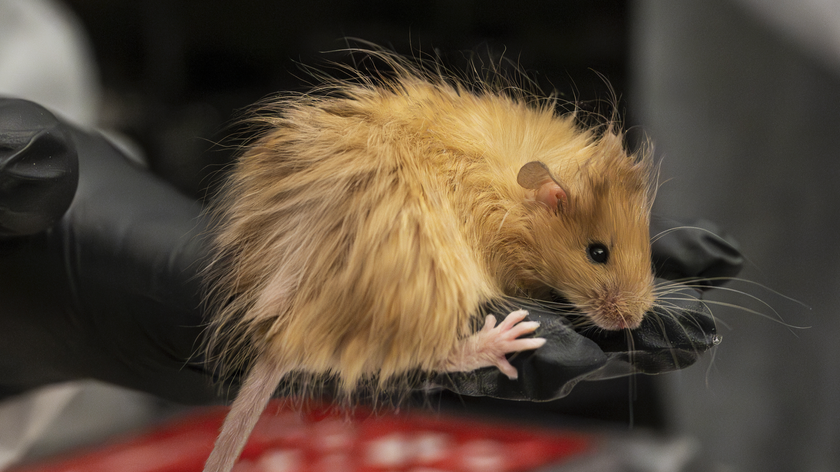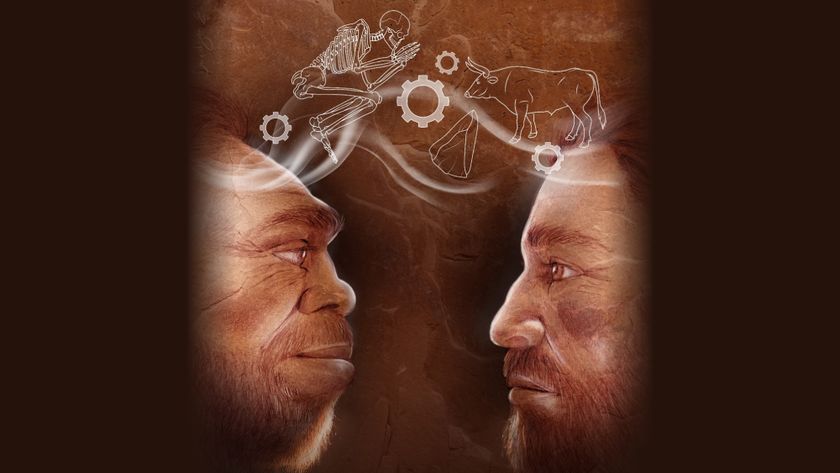Kentucky Derby Horses More Fragile, But Not Faster

Imagine trying to walk on all fours using just your big toes and your middle fingers. That is similar to what modern thoroughbred racehorses endure when racing around a track at up to 30 mph.
Before the gates open for the 135th Kentucky Derby Saturday, there will be a moment of remembrance for Barbaro, the 2006 champion, and Eight Belles, the 2008 runner-up. Both suffered leg injuries that caused them to be put down. This week, two top contenders for the Derby, Quality Road and Square Eddie, were forced out of the race due to hoof and shin injuries.
[Update May 2: On race morning, one of the favorites — I Want Revenge — was scratched due to inflammation in the soft tissue above and below the ankle.]
Critics claim selective breeding may be producing an unstable horse anatomy that is prone to injury. Yet, a recent study claims that it all may be for naught, as thoroughbreds may have already reached their theoretical upper limits of speed.
Running on their toes One of out ten thoroughbreds will suffer from some orthopedic problem, including fractures, which often lead to decisions to destroy them. In the United States, for every 1,000 horses starting a race, there will be 1.5 career-ending injuries, which is almost two per day.
By breeding for speed and power, the bulk of the horse increases while the ankles and lower legs do not,according to some veterinarians.
"Anatomically speaking, they run on their toes," said Lawrence R. Soma, professor at the University of Pennsylvania School of Veterinary Medicine. "That makes them very fragile."
Sign up for the Live Science daily newsletter now
Get the world’s most fascinating discoveries delivered straight to your inbox.
The pounds per square inch load that is put on their hoofs would be similar to humans walking on their middle fingers, experts say. One misstep on a soft patch of the turf can cause a break.
So they're faster, right? Given the large sums of money spent on breeding champion racehorses and the potential health side effects, is it worth it? Are the race times getting faster thanks to these selective genetic performance filters? The answer is no, according to Mark Denny, Professor of Biology at Stanford University.
In a recent study published in the Journal of Experimental Biology, Denny analyzed the race time records for the three U.S. Triple Crown races; the Kentucky Derby, the Preakness Stakes, and the Belmont Stakes. The plateau for similar times for the Kentucky Derby began in 1949, while the Preakness and the Belmont set their plateaus in 1971 and 1973, respectively, Denny found.
"Evidence from the Triple Crown races suggests that the process of selective breeding of thoroughbreds (as practiced in the US) is incapable of producing a substantially faster horse," Denny writes. "Despite the efforts of the breeders, speeds are not increasing, and current attempts to breed faster horses may instead be producing horses that are more fragile."
The solution Denny also tried to predict the fastest possible time for these horses. Using statistical modeling, he found that the maximum speed of a thoroughbred would be only 0.5 to 1 percent faster than seen today.
"These results suggest that definite speed limits do indeed exist for horses and that their current speeds are very close to these predicted limits," Denny said. One reason for the limit may be the gene pool. Today's thoroughbreds descend from a lineage of only 12-29 ancestors, with 95 percent of today's thoroughbreds tracing their paternal roots to a single stallion, The Darley Arabian.
Denny suggests that breeding from outside this line might produce the potential for improvement.
- Video: New 'Super-Dirt' Saves Horses and Riders
- 10 Amazing Things You Didn't Know about Animals
- Video: The Horse and Rider Relationship
Dan Peterson writes about sports science at his site Sports Are 80 Percent Mental. His Science of Sports column appears weekly on LiveScience.












